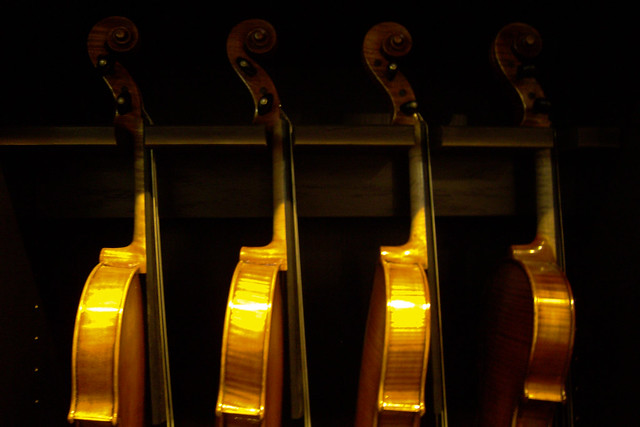"Too many pieces of music finish too long after the end."
AUTHOR: Igor Stravinsky
MEANING OF THE QUOTE:
"The secret to writing a good piece of music is not to
make it too short or too long. Timing is everything."
COMPOSER
VIVALDI

CONCERTO for FOUR VIOLINS,
CELLO, STRINGS, and CONTINUO
B MINOR OPUS 3 NO. 10 RV. 580
Viktoria Mullova, Baroque Violin
G. Antonini, Conductor
Il Giardino Armonico
Basso Continuo is a form of musical
accompaniment (accompaning solo
instruments and singers as well as
instrumental groups) used in the
Baroque period. It means "continuous
bass" and is a method of thickening
musical textures by augmenting the
bass line. Usually this accompaniment
was played by a keyboard instrument
and another bass instrument such as
instrument was normally a
harpsichord or, if it was being played
in a church, an organ.
It was not usual to write out all the
notes for the keyboard player. The
composer normally just wrote the
bottom line (an independent bass
line) which would be played by the
bottom part of the left hand, and by
the cello or whatever the instrument
being used. The composer would
indicate what the harmony should
be (which chords should be played)
by writing figures underneath the
music . This is why this
accompaniment is sometimes called
"figured bass," besides the names of
"thoroughbass," or simply "continuo."
The continuo player will "realize"
the figured bass i.e. he will improvise
the chords which are shown. In
modern editions of old music the
figured bass part has normally been
realized (written out) by the editor.
Over the bass line the accompanist
would often improvise ornamental
bits on the treble top. Reading music
from a figured bass was a skill that
all keyboard and piano players were
expected to have. They needed to
have a good understanding of music
theory, especially of harmony.
The use of the basso continuo is
confined, for the most part, to music
of the Baroque era. So widespread
was the use of the basso continuo
that some people used to refer to
the Baroque period as the "basso
continuo era." Continuo groups are
employed in vocal and instrumental
ensembles ranging from three
musicians to larger groups.
LINKS
GRANADA ADV. STRINGS
1. LAS MANANITAS I
2. IMAGINE
1. LAS MANANITAS I
2. IMAGINE
INTRO. TO INSTRUMENTS
GRANADA
1. RECORDERS
a. First Sounds (Ugly vs Good)
HILLVIEW
1. PERCUSSION INSTRUMENTS
a. Demonstration Completed
b. Finished and collected worksheets
GRANADA
1. RECORDERS
a. First Sounds (Ugly vs Good)
HILLVIEW
1. PERCUSSION INSTRUMENTS
a. Demonstration Completed
b. Finished and collected worksheets
GRANADA BEG. STRINGS
1. SLURRING
(half the bow for each note: down-down/up-up)
a. G, D, and A Major Scales (1 8va)
2. MAY SONG
3. TWINKLE
1. SLURRING
(half the bow for each note: down-down/up-up)
a. G, D, and A Major Scales (1 8va)
2. MAY SONG
3. TWINKLE
HILLVIEW ORCHESTRA
1. LAS MANANITAS I
2. IMAGINE
1. LAS MANANITAS I
2. IMAGINE

